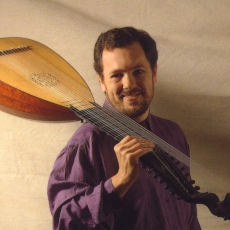
Bach - Nigel North - Atlanta Audio Society
Linn Records' "new-look" full collection of Nigel North's Bach on the Lute series (originally recorded 1993-1996) is a winner in every respect: the music, its superb execution by the artist, and the really beautiful clarity and soundstage presence of the recordings. This 4-volume collection features innovative transcriptions of J S Bach's Sonatas and Partitas for Solo Violin and his Suites for Solo Cello. On the lute, which combines the fine articulation of its keyboard relative the harpsichord with a tonal beauty all its own, these works take on a wonderful new life.
Bach wrote a small number of works specifically for the lute, but he mostly reworked compositions of his that existed in other forms. The Lute Suite BWV 995, for instance, was his own transcription of his 5th Cello Suite, and the Partita BWV 1006a was transcribed from the last Partita for Solo Violin. So Nigel North's undertaking has plenty of precedence in Bach's own day.
In transcribing the violin Sonatas and Partitas, North was keenly aware of the Italian influence in the music. All three Sonatas follow a format of a slow introductory movement, often with written out ornamentation in Italian style, a central fugue, a slow cantabile movement, and a lighter, playful fast movement for the conclusion. Within this structure it is amazing how each Sonata is so different. North does a wonderful job of strongly characterizing these three sonatas.
The three Violin Partitas are more diverse in form and content. No. 1 BWV 1002 has four dance-originated movements, each with a ‘double' or variation, but at the same time it plays like an Italian sonata. No. 3 BWV 1006 with its French dance movements - Bouree, Loure, Gavotte Minuet and Gigue - is the lightest and brightest of the set. No. 2 BWV 1004 contains the famous Chaconne, one of the most stirring and perfectly formed instrumental movements Bach (or anyone else) ever wrote.
The six Cello Suites BWV 1007-1012 have gotten more playing time in my house over the years than have the solo violin works, probably because of the infectious rhythms that predominate in their dance-oriented movements and the fact that they are so idiomatically beautiful for the cello. They sound equally charming when played on the lute. All are "classic" Bach suites consisting of a Prelude plus 5 dances, with Menuets, Bourees and Gavottes equally represented. But within this similar structure each suite is absolutely unique. For instance, the naïve charm and simplicity of the tripping Courante, innocent Sarabande, and delightful Minuets I and II in Suite No. 1 contrasts sharply with the mood of Suite No. 4, with its starkly tragic and dramatic Prelude casting a melancholy pall over the whole work that is not dispelled by the uncharacteristically stern Allemande and somber, austerely lovely Sarabande that follow it.
All six of the cello suites, by the way, contain Sarabandes, slow dance movements that vary in affect from romantic charm to depths of real melancholy beauty. North describes these Sarabandes are his favorite "desert island" pieces. His playing of them makes his own persuasive argument for this assessment. I couldn't agree more.